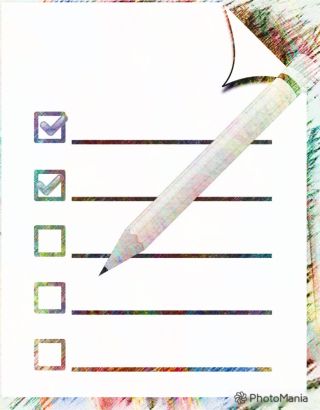MINDFULNESS- Survey Says Scanning Is a Small but Mighty Mindfulness Move A brief, sequential "scanning" exercise is a helpful "mighty mini." Reviewed by Gary Drevitch

KEY POINTS-
- Brief, potent mindful tactics are handy stress busters and are easily taught and learned.
- "Scanning" exercises can quickly ground us in momentary experience.
- Scanning can include physical sequences, sense inputs, and even body/heart/thoughts awareness.
- An imaginal technique, "gathering" and releasing attention to sequential targets, can amplify the benefit.

This post concerns the second of what I've coined as the "core four" brief but potent meditation tactics. In contrast to the more incremental development in mindful self-awareness that a longer-form meditation practice can cultivate, these "mighty mini mindfulness moves" bubbled out of collaborative work on a new book project (Mindfulness in Medicine) about implementing the goodness of mindfulness through the whole of today's leviathan healthcare system.
These mighty minis are meant to be quickly taught by health-care and educational professionals and easily entrained in our patients, our students, and ourselves. With reinforcement, these "moves" can hopefully become reflexive, second-nature stress busters, applied in preparation for and/or during stressful moments, whether in a medical setting or elsewhere.
Today we explore mighty mini Number 2: "scanning" meditation. This practice involves a brief, systematic survey of aspects of a whole experience, or subset thereof. That can involve:
- A sequential scanning or surveying of the physical body, part by part, head to toe or toe to head. This is likely the most familiar scanning exercise, and it's included prominently in Jon Kabat-Zinn's MBSR curriculum. We bring awareness to different physical sensations and areas of tension or relaxation, as well as any other stuff (emotions, thoughts) that may arise during the surveying. Body scanning meditation can be more "granular" and extensive (hello, left pinky toe!) but as a mighty mini, the benefit here is in entraining a briefer sweep, bringing a sense of the body mindfully "online" in a few minutes, or even a few breaths.
- A "hybrid" tactic is the well-known "PMR," or progressive muscle relaxation, wherein one surveys groupings of musculature (hand to forearm to upper arm to shoulder, then the other limb, etc.) by first tensing/flexing/tightening that area briefly, then releasing. We "find" the area in attention by the flex, and can loosen and relax it in the release.
- A subset or variation on this theme is a sequential survey of externally-attended-to sense inputs—vision, sound, smell, touch, perhaps even taste. This can obviously be of benefit in nature settings, but a quicker survey of "what I'm immersed in, right now" can be grounding in unfamiliar, stressful settings.
- A broader but still brief variation on the body scan, which could be called a "self" scan, involves sequential targets of awareness beyond physical phenomena to a full attending to body, emotions, thoughts and then a full opening to self-in-the-moment. As I explore in more detail in Practical Mindfulness, our momentary "landscape" of conscious experience can be split out in variety of ways, including body; heart; head; space; and "watcher" (the sense of being aware itself). The sequence involves a breath or more (inhaling to noting the breath, then exhaling to these targets) on bodily sensations; then moving to emotional tone (often located in the chest or heart area); then to observing prominent thoughts in the moment; then a final breath or more pulling attention out to the self in whole —body, heart, and head—in this moment. This broader, systematic practice of attending sequentially through not just somatic experience, but the associated emotional, thought/ruminative, and then a "full self" experiential view is especially effective as a rescue tactic for those in acute emotional distress, such as panic events, intense anger/dysphoria, craving, and urges toward craving self-harm or suicidal ideation.
That breathing recipe above leads me to offer one other tip that I think can make any of the surveys more effective. It's borrowed from a lovely historical Buddhist meditative practice, known as tonglen (translated as "taking and sending"). One uses some imaginal sense of "breathing in" awareness (classically, of the suffering of another) on the in-breath, and then "breathing out" compassionate awareness. In long form, it's a potent and positive exercise in bonding meditatively with others in our shared human experience. (A "cosmic air filter," I once spouted off. The other retreatants were not as amused.)
That tactical aspect, though—utilizing mighty mini Number 1, breathing, to guide Number 2, scanning—charges a cycle of "gathering," then "directing" awareness to the next body section, or emotional state, or head full of thoughts. And then another gathering in of attention, staying on track for a brief tuning-in routine.
You can find some resources here to help spread the use and benefit of this mighty, mini, mindful move. It has wide applicability in a variety of medical settings and other situations. Whether of the physical "territory" or of a fuller survey of all inner experience, scanning practices can be valuable in acute suffering and in grounding individuals in better momentary self-awareness and a sense of control.
- Questions and Answers
- Opinion
- Story/Motivational/Inspiring
- Technology
- Art
- Causes
- Crafts
- Dance
- Drinks
- Film/Movie
- Fitness
- Food
- Игры
- Gardening
- Health
- Главная
- Literature
- Music
- Networking
- Другое
- Party
- Religion
- Shopping
- Sports
- Theater
- Wellness
- News
- Culture
- War machines and policy

